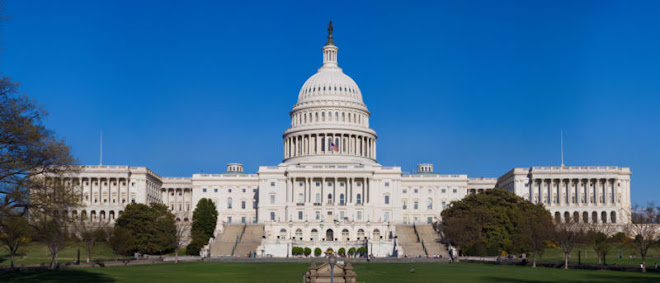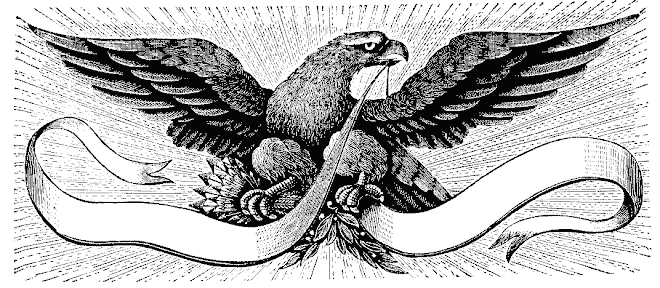From The CATO Institute:
Real-World Cases Prove: Spending Restraint Works
by Daniel J. Mitchell
Daniel Mitchell is a senior fellow at the Cato Institute in Washington, D.C.
Added to cato.org on March 4, 2011
This article appeared in Investor's Business Daily on March 4, 2011.
PRINT PAGE CITE THIS Sans Serif Serif Share with your friends:
ShareThis
Good fiscal policy doesn't require miracles — or dramatic showdowns. All politicians have to do is limit the growth of the public sector. Combined with normal revenue growth, this approach eliminates red ink very quickly.
This is what happened in the U.S. during the Clinton-Gingrich years. Between 1994 and 1999, total government spending increased by an average of just 3% annually. The budget deficit, which was projected in early 1995 (18 months after the 1993 tax increase!) to remain above $200 billion for the rest of the century, quickly became a budget surplus once spending was restrained.
Fiscal discipline also works when it is tried in other nations. Data from the Economist Intelligence Unit reveal that four nations — Canada, Ireland, Slovakia and New Zealand — dramatically reduced budget deficits in recent decades by imposing strict limits on government spending.
Daniel Mitchell is a senior fellow at the Cato Institute in Washington, D.C.
More by Daniel J. Mitchell
Interestingly, these data also reveal that the tax burden was stable or falling during these periods of fiscal progress.
Canada, for instance, was in deep fiscal trouble. The burden of government spending had climbed above 53% of gross domestic product in 1992 and the deficit was more than 9% of economic output. Then lawmakers embarked on a new course. Government was put on a diet, and between 1992 and 1997 Canada's budget rose from $374 billion Canadian to $391 billion, an average annual increase of less than 1%.
This period of frugality paid big dividends. The burden of government spending dropped to 44% of GDP. The budget deficit, meanwhile, completely disappeared. After five years of fiscal discipline, record levels of red ink were transformed into a small budget surplus.
Ireland was in a tailspin by the mid-1980s. The burden of government spending had skyrocketed to more than 60% of GDP and the nation's deficit was consuming more than 12% of economic output. To avoid a crisis, Irish policy froze the budget. The Irish budget was 14.7 billion euros in 1985, and it was only 14.7 billion euros in 1989.
This four-year spending freeze was enormously successful. The burden of government spending plunged to less than 43% of GDP. The budget deficit also fell dramatically, consuming just 2.7% of economic output at the end of this period.
Slovakia, like many other nations that emerged from the collapse of the Soviet empire, was saddled with a large public sector. To solve the problem, policymakers restrained government. From 2000-03, the Slovakian budget grew from 11.5 billion euros to 11.8 billion euros, an average increase of 1.3%.
This modest period of fiscal discipline had a big impact. The burden of the public sector dropped from 36.9% of GDP down to 29.2% of economic output. During this time, the deficit fell from 8.7% of GDP to 2.0%. Combined with pro-growth policies such as the flat tax and personal retirement accounts, the nation has enjoyed robust growth.
Last but not least, let's look at New Zealand. The burden of the public sector by the end of the 1980s had climbed to more than one-half of economic output. The Kiwis staged a turnaround by putting a clamp on public-sector spending. Between 1990 and 1995, the New Zealand Budget actually dropped from $39.3 billion New Zealand to $38.8 billion.
This five-year spending freeze put the nation in a much stronger position. The burden of government spending plummeted by more than 10 percentage points of GDP in New Zealand, dropping from 53.5% of economic output down to 43.1%. And a deficit of 4.5% of GDP was transformed during those five years to a surplus of 2.8% of GDP.
This pattern should not be a surprise. Restraining government spending generates good results because the private sector grows faster than the public sector.
Many self-proclaimed deficit hawks in Washington argue that deficit reduction is impossible without substantial tax increases. But American policymakers implemented a big tax cut, in 1997, during the period when the deficit became a surplus.
In other nations, the tax burden actually dropped by significant amounts during the relevant periods — falling by 8.1 percentage points of GDP in Ireland, 1.1 percentage points of GDP in Slovakia, and 3.1 percentage points of GDP in New Zealand. The overall tax burden did rise in Canada, but only by 0.3 percentage point of GDP.
The moral of the story is that limiting the growth of government spending is the right recipe. If the politicians in Washington replicated the spending discipline of these other nations, we would enjoy similar results.
Two percent annual spending increases would lead to fiscal balance by 2021. Limiting spending growth to 1% annually would balance the budget by 2019. A spending freeze would balance the budget by 2017.
Real-World Cases Prove: Spending Restraint Works
by Daniel J. Mitchell
Daniel Mitchell is a senior fellow at the Cato Institute in Washington, D.C.
Added to cato.org on March 4, 2011
This article appeared in Investor's Business Daily on March 4, 2011.
PRINT PAGE CITE THIS Sans Serif Serif Share with your friends:
ShareThis
Good fiscal policy doesn't require miracles — or dramatic showdowns. All politicians have to do is limit the growth of the public sector. Combined with normal revenue growth, this approach eliminates red ink very quickly.
This is what happened in the U.S. during the Clinton-Gingrich years. Between 1994 and 1999, total government spending increased by an average of just 3% annually. The budget deficit, which was projected in early 1995 (18 months after the 1993 tax increase!) to remain above $200 billion for the rest of the century, quickly became a budget surplus once spending was restrained.
Fiscal discipline also works when it is tried in other nations. Data from the Economist Intelligence Unit reveal that four nations — Canada, Ireland, Slovakia and New Zealand — dramatically reduced budget deficits in recent decades by imposing strict limits on government spending.
Daniel Mitchell is a senior fellow at the Cato Institute in Washington, D.C.
More by Daniel J. Mitchell
Interestingly, these data also reveal that the tax burden was stable or falling during these periods of fiscal progress.
Canada, for instance, was in deep fiscal trouble. The burden of government spending had climbed above 53% of gross domestic product in 1992 and the deficit was more than 9% of economic output. Then lawmakers embarked on a new course. Government was put on a diet, and between 1992 and 1997 Canada's budget rose from $374 billion Canadian to $391 billion, an average annual increase of less than 1%.
This period of frugality paid big dividends. The burden of government spending dropped to 44% of GDP. The budget deficit, meanwhile, completely disappeared. After five years of fiscal discipline, record levels of red ink were transformed into a small budget surplus.
Ireland was in a tailspin by the mid-1980s. The burden of government spending had skyrocketed to more than 60% of GDP and the nation's deficit was consuming more than 12% of economic output. To avoid a crisis, Irish policy froze the budget. The Irish budget was 14.7 billion euros in 1985, and it was only 14.7 billion euros in 1989.
This four-year spending freeze was enormously successful. The burden of government spending plunged to less than 43% of GDP. The budget deficit also fell dramatically, consuming just 2.7% of economic output at the end of this period.
Slovakia, like many other nations that emerged from the collapse of the Soviet empire, was saddled with a large public sector. To solve the problem, policymakers restrained government. From 2000-03, the Slovakian budget grew from 11.5 billion euros to 11.8 billion euros, an average increase of 1.3%.
This modest period of fiscal discipline had a big impact. The burden of the public sector dropped from 36.9% of GDP down to 29.2% of economic output. During this time, the deficit fell from 8.7% of GDP to 2.0%. Combined with pro-growth policies such as the flat tax and personal retirement accounts, the nation has enjoyed robust growth.
Last but not least, let's look at New Zealand. The burden of the public sector by the end of the 1980s had climbed to more than one-half of economic output. The Kiwis staged a turnaround by putting a clamp on public-sector spending. Between 1990 and 1995, the New Zealand Budget actually dropped from $39.3 billion New Zealand to $38.8 billion.
This five-year spending freeze put the nation in a much stronger position. The burden of government spending plummeted by more than 10 percentage points of GDP in New Zealand, dropping from 53.5% of economic output down to 43.1%. And a deficit of 4.5% of GDP was transformed during those five years to a surplus of 2.8% of GDP.
This pattern should not be a surprise. Restraining government spending generates good results because the private sector grows faster than the public sector.
Many self-proclaimed deficit hawks in Washington argue that deficit reduction is impossible without substantial tax increases. But American policymakers implemented a big tax cut, in 1997, during the period when the deficit became a surplus.
In other nations, the tax burden actually dropped by significant amounts during the relevant periods — falling by 8.1 percentage points of GDP in Ireland, 1.1 percentage points of GDP in Slovakia, and 3.1 percentage points of GDP in New Zealand. The overall tax burden did rise in Canada, but only by 0.3 percentage point of GDP.
The moral of the story is that limiting the growth of government spending is the right recipe. If the politicians in Washington replicated the spending discipline of these other nations, we would enjoy similar results.
Two percent annual spending increases would lead to fiscal balance by 2021. Limiting spending growth to 1% annually would balance the budget by 2019. A spending freeze would balance the budget by 2017.










No comments:
Post a Comment